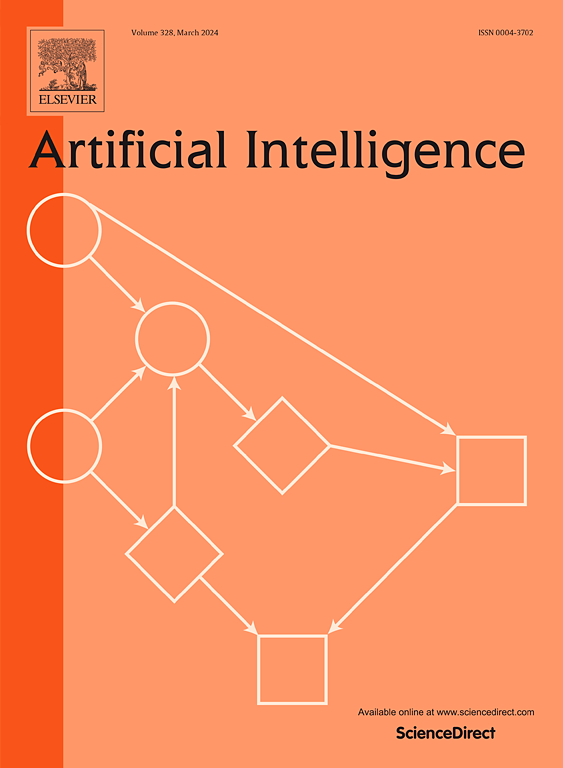强连接有向图上的多智能体寻路:可行性和求解算法
IF 4.6
2区 计算机科学
Q1 COMPUTER SCIENCE, ARTIFICIAL INTELLIGENCE
引用次数: 0
摘要
在给定图上,多智能体寻路(MAPF)问题包括为多个智能体寻找路径,避免碰撞。已知找到最小长度的解是np困难的,并且计算时间随着代理的数量呈指数增长。然而,在工业应用中,重要的是要找到可行的,次优的解决方案,在一个多项式增长的时间与代理的数量。这种算法存在于无向图和双连通有向图。我们的主要贡献是将这些算法推广到更一般的强连通有向图的情况。特别地,我们描述了一个在线性时间内根据顶点数n检验问题可行性的过程,并找到了任意MAPF实例的可行性的充分必要条件。此外,我们提出了一种算法(diSC),它提供了一个长度为O(kn2c)的可行解,其中k为智能体的数量,c为图的走廊的最大长度。本文章由计算机程序翻译,如有差异,请以英文原文为准。
Multi-agent pathfinding on strongly connected digraphs: Feasibility and solution algorithms
On an assigned graph, the problem of Multi-Agent Pathfinding (MAPF) consists in finding paths for multiple agents, avoiding collisions. Finding the minimum-length solution is known to be NP-hard, and computation times grows exponentially with the number of agents. However, in industrial applications, it is important to find feasible, suboptimal solutions, in a time that grows polynomially with the number of agents. Such algorithms exist for undirected and biconnected directed graphs. Our main contribution is to generalize these algorithms to the more general case of strongly connected directed graphs. In particular, we describe a procedure that checks the problem feasibility in linear time with respect to the number of vertices n, and we find a necessary and sufficient condition for feasibility of any MAPF instance. Moreover, we present an algorithm (diSC) that provides a feasible solution of length , where k is the number of agents and c the maximum length of the corridors of the graph.
求助全文
通过发布文献求助,成功后即可免费获取论文全文。
去求助
来源期刊

Artificial Intelligence
工程技术-计算机:人工智能
CiteScore
11.20
自引率
1.40%
发文量
118
审稿时长
8 months
期刊介绍:
The Journal of Artificial Intelligence (AIJ) welcomes papers covering a broad spectrum of AI topics, including cognition, automated reasoning, computer vision, machine learning, and more. Papers should demonstrate advancements in AI and propose innovative approaches to AI problems. Additionally, the journal accepts papers describing AI applications, focusing on how new methods enhance performance rather than reiterating conventional approaches. In addition to regular papers, AIJ also accepts Research Notes, Research Field Reviews, Position Papers, Book Reviews, and summary papers on AI challenges and competitions.
 求助内容:
求助内容: 应助结果提醒方式:
应助结果提醒方式:


